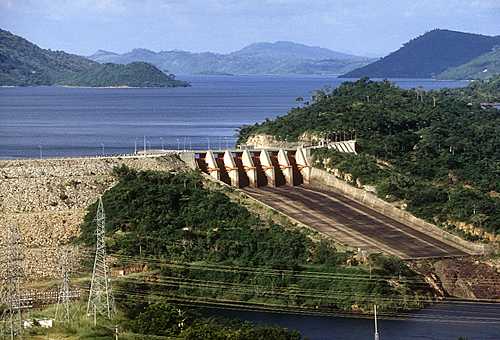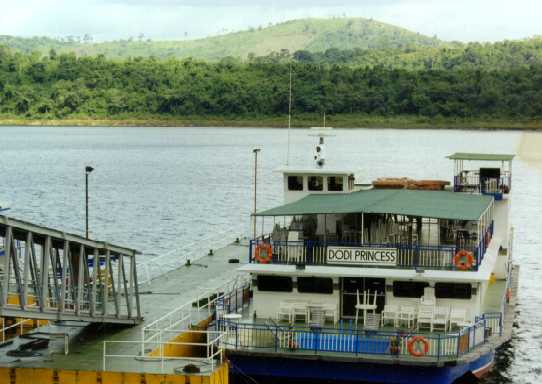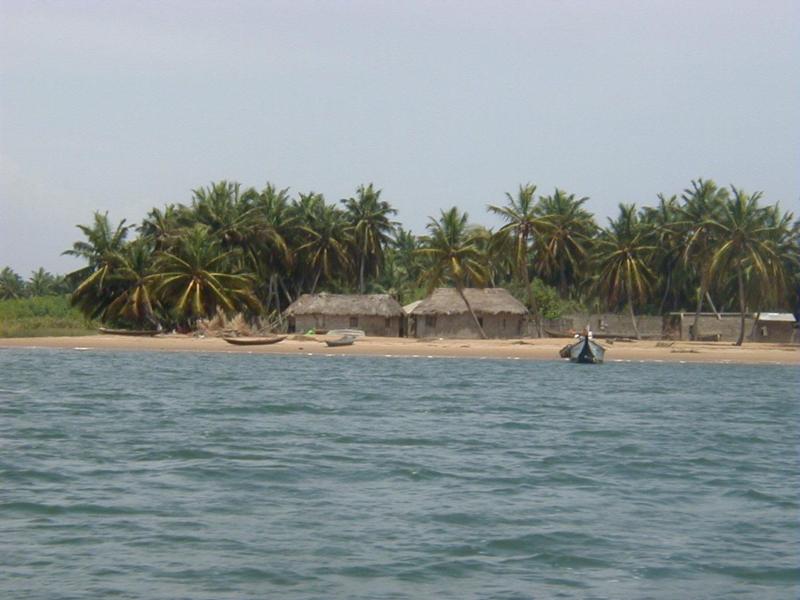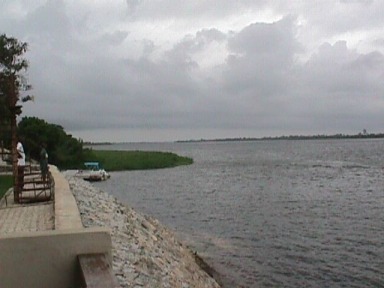Lake Volta & Akosombo
 Volta BasinOccupying the central part of Ghana, the Volta Basin covers about 45 percent of the nation's total land surface. Its northern section, which lies above the upper part of Lake Volta, rises to a height of 150 to 215 meters above sea level. Elevations of the Konkori Scarp to the west and the Gambaga Scarp to the north reach from 300 to 460 meters. To the south and the southwest, the basin is less than 300 meters. The Kwahu Plateau marks the southern end of the basin, although it forms a natural part of the Ashanti Uplands. The basin is characterized by poor soil, generally of Voltaian sandstone. Annual rainfall averages between 1,000 and 1,140 millimeters. The most widespread vegetation type is savanna, the woodlands of which, depending on local soil and climatic conditions, may contain such trees as Red Ironwood and Shea.
The basin's population, principally farmers, is low in density, especially in the central and northwestern areas of the basin, where tsetse flies are common. Archeological finds indicate, however, that the region was once more heavily populated. Periodic burning evidently occurred over extensive areas for perhaps more than a millennium, exposing the soil to excessive drying and erosion, rendering the area less attractive to cultivators.
In contrast with the rest of the region are the Afram Plains, located in the southeastern corner of the basin. Here the terrain is low, averaging 60 to 150 meters in elevation, and annual rainfall is between 1,140 and about 1,400 millimeters. Near the Afram River, much of the surrounding countryside is flooded or swampy during the rainy seasons. With the construction of Lake Volta (8,515 hectares in surface area) in the mid-1960s, much of the Afram Plains was submerged. Despite the construction of roads to connect communities displaced by the lake, road transportation in the region remains poor. Renewed efforts to improve communications, to enhance agricultural production, and to improve standards of living began in earnest only in the mid-1980s.
|



